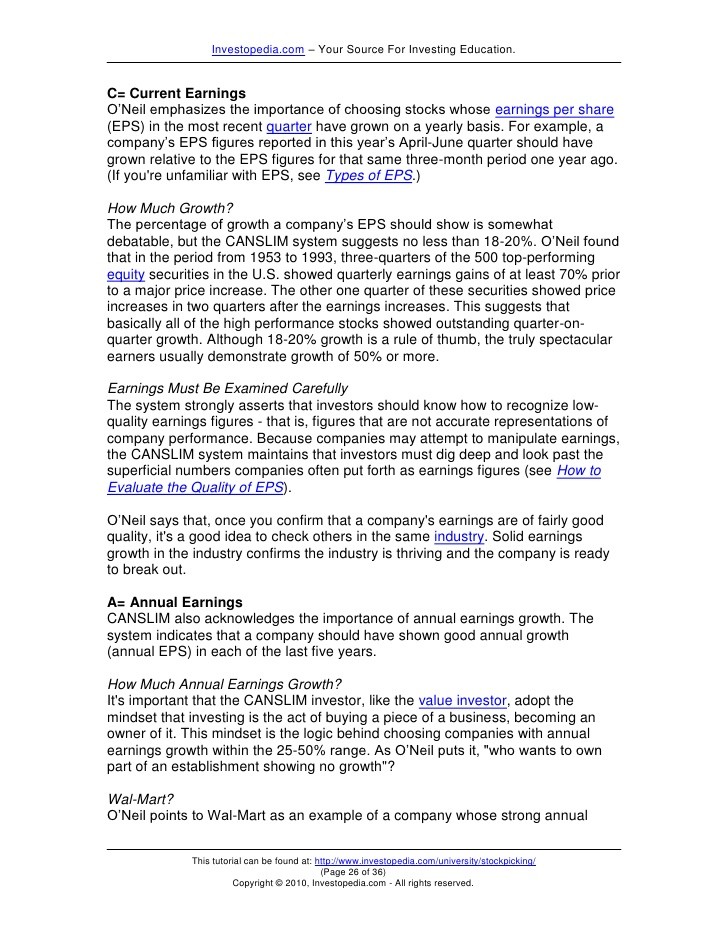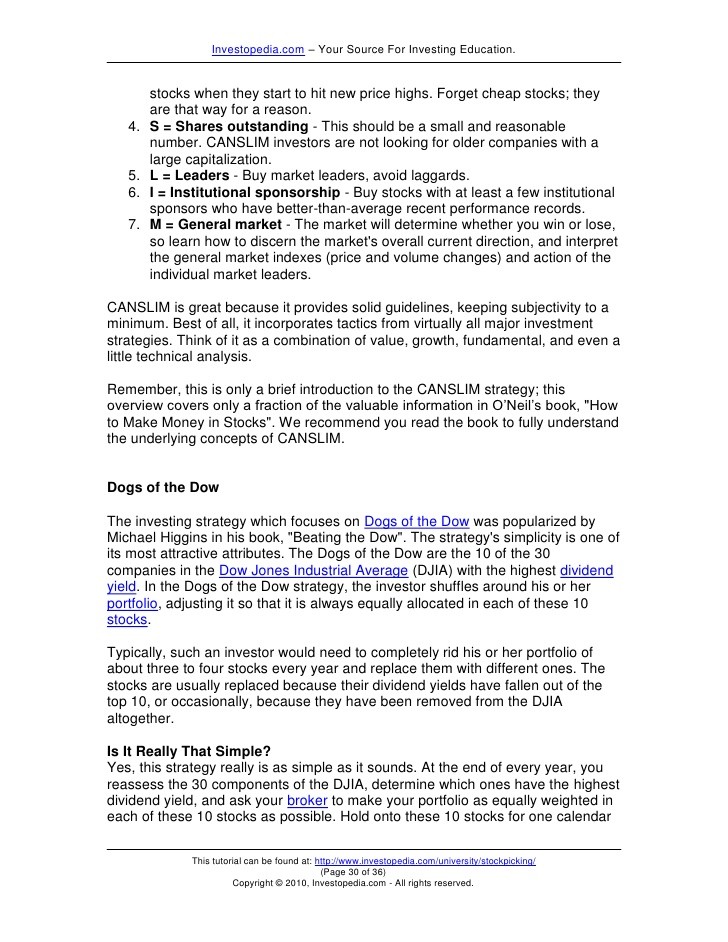Stocks Are Doome More Stock! Your Source for Stock Ideas
Post on: 15 Апрель, 2015 No Comment

By Jonas Elmerraji
Senior Contributor
04/29/13 — 09:46 AM EDT
BALTIMORE (Stockpickr ) — Have you heard? Stocks are doomed.
Or at least that’s the story that most investors are still sticking to in 2013.
>>5 Toxic Stocks You Need to Sell
Despite all the scariness in stocks right now — and I’ll concede that there is some scariness — the evidence points to more upside in Mr. Market for the foreseeable future. There’s a big difference this time around, though. With the S&P 500 up more than double since its lowest point in 2009, the stakes are a lot higher for investors who aren’t paying attention.
Thing is, this massive rally hasn’t been fuelled by retail cash pouring into the stock market by the dump truck-full. So far, most individual investors have been sitting on the sidelines. At some point, though, that’s going to change, and when it does, the money flow into stocks is going to accelerate the uptrend in the broad market.
>>Fight Your Urge to Fight the Fed
Today, I want to bust the myths that may be holding you back from buying stocks.
Myth 1: Everyone Already Loves Stocks
Don’t confuse the 11% climb year-to-date in the S&P with investors loving stocks. They don’t.
By and large, investors see the climb in the broad market as a reason to be concerned about a correction, not a reason to pile into what they mistakenly see as a “crowded trade.” I’m not just talking about individual investors, though. Wall Street hates stocks too.
>>3 Huge Stocks on Traders’ Radars
Strategist stock allocations, a measure of how strategists at investment firms are recommending clients allocate their portfolios to stocks, are currently at 45.8%. That means that Wall Street is recommending that investors keep less than half of their money in the stock market in the middle of a rally. For context, that’s less love for stocks than strategists showed back in the depths of 2009.
Compare that with the lofty 72% that Wall Street recommended putting into stocks back in 2001. And the metric came off of an all-time low in the middle of last year. Face it, the pros don’t really like stocks right now.
And neither do retail investors.
Sentiment surveys like the one put out by the American Association of Individual Investors still skew on the bearish side right now (even though the AAII survey has become very volatile). And I’ve only heard a few people mention one of the most important things about those retail investor surveys: They only include investors who like stocks enough to maintain their AAII memberships. The investors who got disenchanted with stocks don’t show up in the poll.
So the next time you hear that investors are already in love with stocks, take it with a grain of salt.
>>5 Stocks Poised for Big Breakouts
Myth 2: Stocks Are Too Expensive
With the S&P 500 and the Dow Jones Industrial Average each poking up into new all-time highs this month, it’s only natural to wonder how high is too high. But we’re far from too high right now.
I mentioned earlier that the big indices have more than doubled since the market bottomed in 2009. But remember that equities were woefully oversold by that point. 2009 isn’t the fundamental baseline for stocks; it was a once-in-a-generation discount. And since the market bottomed four years ago, corporate fundamentals have kept pace with soaring stock prices.
Case in point: The price-to-earnings ratio of the S&P 500.
As I write, the S&P’s P/E ratio sits right around 15.5. And while that’s high compared to the dirt-cheap valuations stocks saw in 2009, that’s not a historically high level for stocks. In fact, the S&P’s P/E is currently lower than it was in almost all of the 1960s, 1980s, 1990s and 2000s.
The 1970s were the only decade since the index’s inception where the average stock’s P/E was lower — and it was a decade where stock prices stagnated. The S&P has gone higher in the past four months than it did in that whole 10-year span.
We’re nowhere close to the kinds of P/E ratios you’d expect to see around a market top. Assuming fundamental numbers stayed the same for stocks, the S&P would need to reach 2,852 to reach the premiums seen at the 2007 top — and 4,469 to reach the tip-top in 2000!
And let’s not forget cash.
>>5 Stocks Fund Managers Love for 2013
Right now, U.S. corporations hold record amounts of cash on their balance sheets. Buy the “average” S&P 500 component today, and 21% of its share price can be attributed to cold, hard cash. That’s unheard of.
That also greatly diminishes the risks of being an investor today. Take that record cash out of the S&P’s P/E ratio, and suddenly we’re looking at an earnings multiple of 12.2 for the broad market. Yup, stocks are still cheap.
Myth 3: The Market’s Internals Are Weakening

Even though we’re not seeing much high-conviction buying in the broad market right now, the technicals have been stellar.
You don’t have to be an expert technical analyst to see what’s going on in stocks right now. Just take a look at this chart of the S&P 500:
If there’s a single word to describe the rally in stocks since November, it’s “orderly.” More important, the price channel in the S&P 500 has been highly predictive. It indicated a key buying opportunity in stocks as recently as last week when the S&P bounced off of its 50-day moving average.
From a technical standpoint, we’re in a “buy the dips market” right now.
Quality names have been leading lately, with large-cap dividend payers showing stellar relative strength. That’s indicative that we’re still in the early phases of this rally. Outperformance in more-speculative names doesn’t typically happen until the later phases of a bull market, when retail investors have already bought into the idea that stocks are back in favor.
But one important thing no one’s mentioning about this recent rally is that the S&P has managed to make a technically textbook climb in spite of the fact that its biggest components (names such as Apple (AAPL ) and Exxon Mobil (XOM )) have been languishing at best. That means that other names have had to pick up the slack; it points to robust market internals.
Zoom out to a longer-term timeframe, things look every bit as orderly. The broad market has been in a well-defined uptrend from its 2009 lows all the way up to the most recent big correction in the fall of 2012, and until that changes, it makes sense to be a buyer.
Make no mistake: Stocks aren’t doomed in 2013. But this quarter, the portfolio returns for investors who ignore them will be.
— Written by Jonas Elmerraji in Baltimore.
RELATED LINKS:
>>5 Stocks Under $10 Set to Soar
>>5 Big Names to Trade for Earnings Season
>>5 Stocks Insiders Love Right Now
At the time of publication, author had no positions in stocks mentioned.
Jonas Elmerraji, CMT, is a senior market analyst at Agora Financial in Baltimore and a contributor to TheStreet. Before that, he managed a portfolio of stocks for an investment advisory returned 15% in 2008. He has been featured in Forbes , Investor’s Business Daily, and on CNBC.com. Jonas holds a degree in financial economics from UMBC and the Chartered Market Technician designation.














